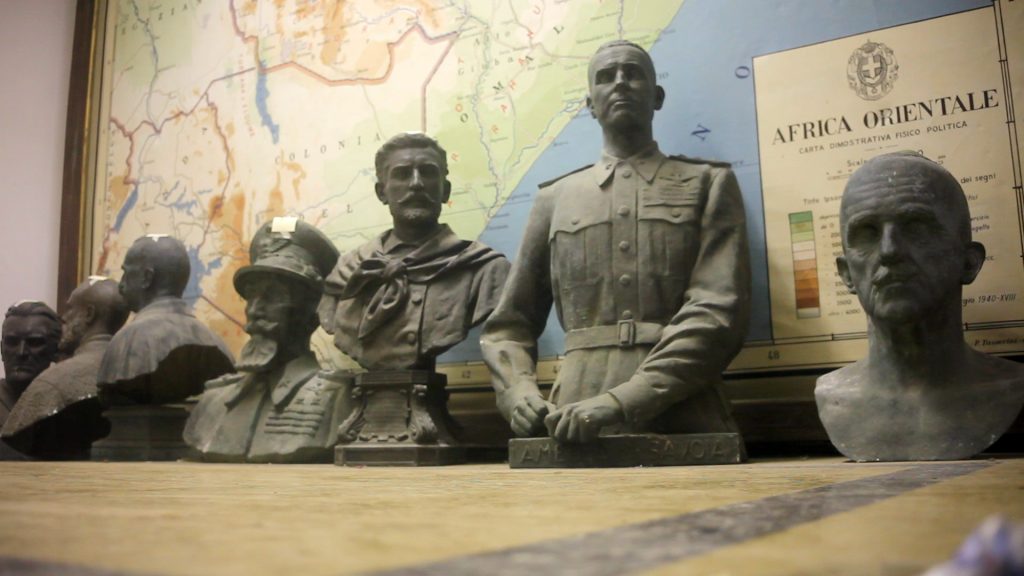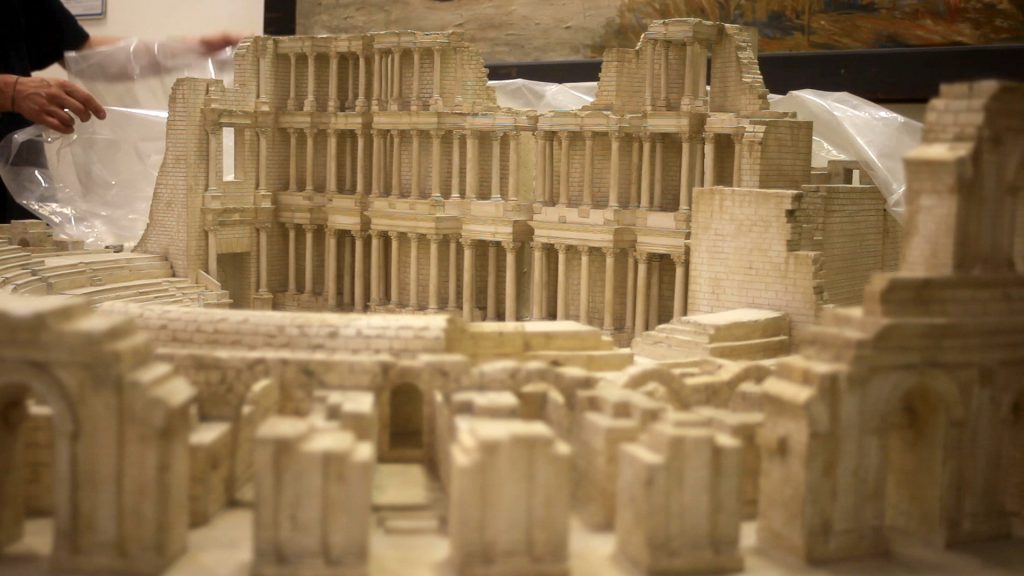Excerpt from a talk held by Leone Contini in Palermo on 4 June 2022
Italy’s colonial past was long and violent. Long in the sense that colonialism began in the immediate post-unification phase and ended after the Second World War; and then, in the overlapping of colonialism with fascism, there is a growth of its own violence, which becomes unbearable. Today we have talked about various museums, in France, England, Belgium, Holland and Germany, but we have not talked about the state of things today in Italy, a country with many ethnographic museums. In Florence, when we were children, we were taken to see the ethnographic museum in Florence, which was, like every other ethnographic museum, a scandal. The fact that they take children there makes us understand how these kinds of objects, acquired in a situation of violence and unequal power relations, are instead incorporated within the heritage and therefore assimilated almost naturally, as if they were an inalienable part of the heritage of the colonising countries.
Today I am going to talk specifically about a particular case that unites the issues addressed so far: restitution and reparation. Restitution alone is not enough, it cannot make up for the damage done, it is not fully capable of sewing up the tear. In cases whose abduction has led to a political and religious crisis, the damage is in fact irreversible: it is therefore essential to think also of reparation and not only of restitution.

The museum I am going to tell you about combines restitution issues with new ones. We are talking about the former colonial museum in Rome, founded in 1923, during the fascist period. It is a museum created as a propaganda tool to promote the colonial cause. This museum contains many objects that could well be found in an ethnographic museum, but it also contains many more specific ones.
Visiting the museum, I came across at one point a kind of model with classical architectural structures under a semi-transparent veil. The fact that it was not fully visible to the public, because it was hidden, intrigued me. Since then, it was 2016, this work of discovering and researching this collection and this disused museum began.
The collection is divided into thematic areas because it is extremely heterogeneous: the archaeological element was a powerful ideological vector of colonialism. Archaeology was used to somehow justify the return of the Italians to the Libyan shore. There were also cannons, plaster casts made by physicists and anthropologists, the tanned skins of animals – all clearly the result of extractivism. The collection is colonial and violent in an extremely explicit way, everything becomes an object of predation: from the human body, to the face, to the production of seeds (the bio-diversity being appropriated).

You can see from the photos that the collection is moving from one place to another. This heterogeneous production that I am describing is scattered, spread out, around the city of Rome. Not only is it the collection of an extinct museum, and therefore reflects a kind of oblivion, but the collection is dismembered according to thematic areas. We can call it a museum in transition, a transition both physical and institutional. Today, the objects of the collection are parked in the corridors or, worse, in the storerooms of other museums: in the Gallery of Modern Art, in the Infantry Museum, in the Zoological Museum, and finally, in the storerooms of the Museo Pigorini. A collection dismembered as if to hide the traces of a crime.
Of all these busts that are part of the collection and that in various ways contributed to Italian colonialism, I focus in patricular on the one depicting Rodolfo Graziani, condemned by an Italian court for war crimes committed in Italy. However, Graziani committed much more extensive crimes during his military life, specifically in Libya and Ethiopia: concentration camps, summary executions, massacres of various kinds, in which the civilian population was also involved. The bust depicting a war criminal is an inalienable asset of the Italian state.
